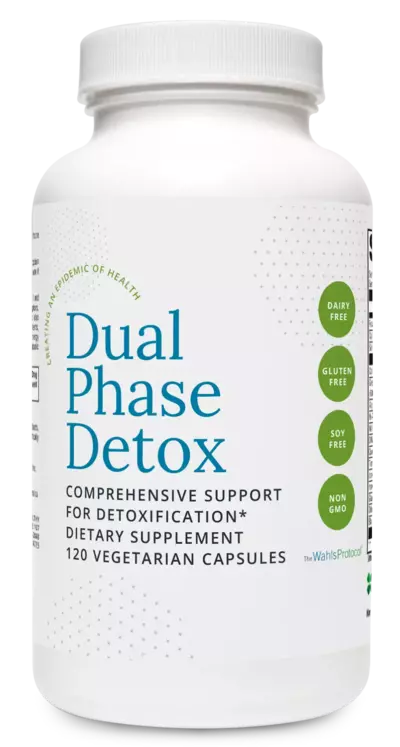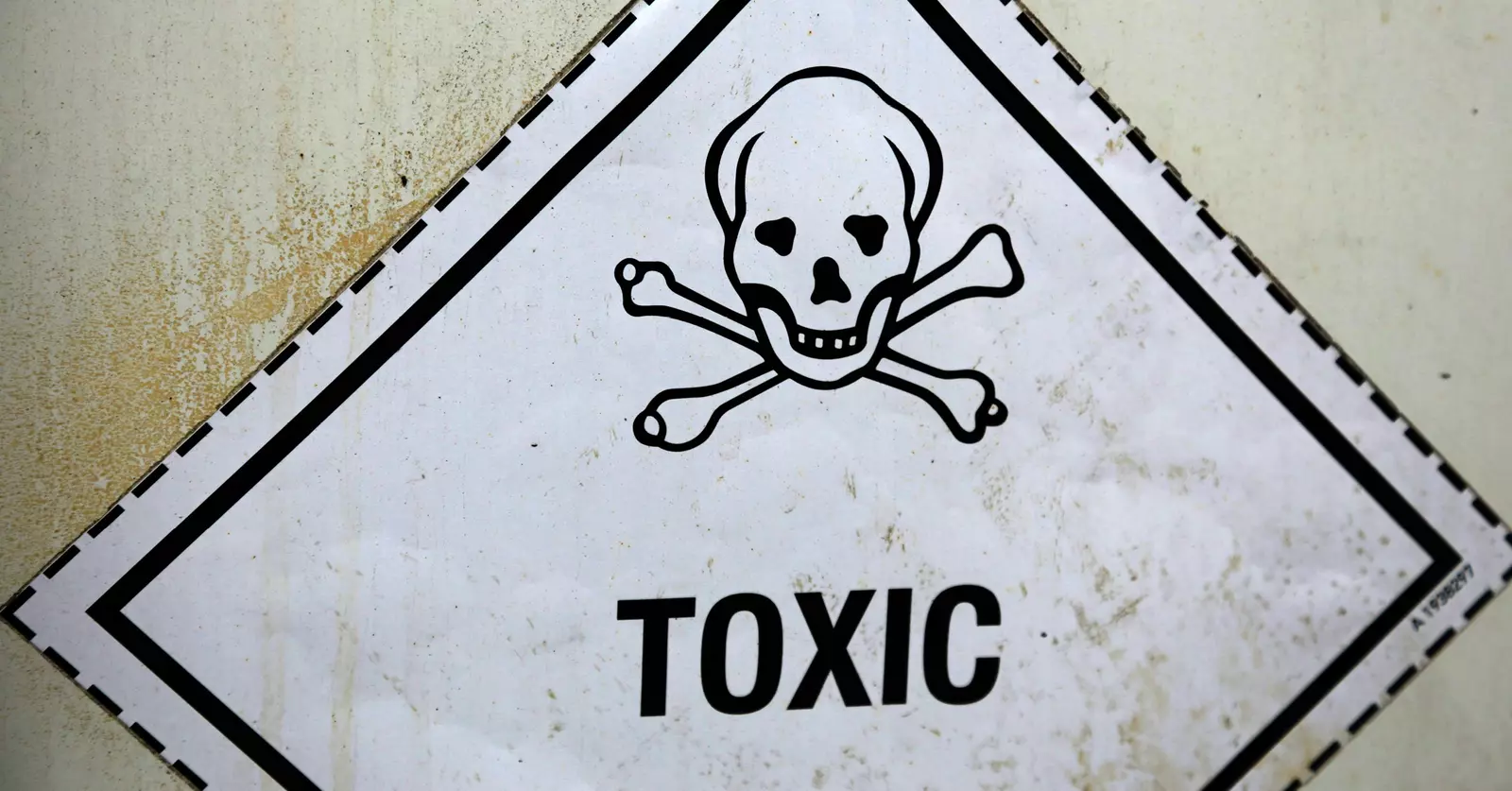We are exposed to toxins daily, in our homes, workplaces, and through the products we consume. Your body’s toxin burden refers to the total amount of harmful substances—like heavy metals, pesticides, or industrial chemicals—that are stored in your tissues (especially fat and bone). These toxins accumulate over time from food, water, air, and everyday products and can overwhelm your natural detoxification systems, contributing to chronic symptoms.
In this blog I will discuss the link between the body’s toxin burden and the most common symptoms seen in primary care clinics—fatigue, pain, mood problems, brain fog, and abdominal complaints. Toxin exposure is also closely linked to painful and/or heavy periods and fertility problems. I’ll review how these chemicals affect your health, strategies to reduce exposure, and ways to support your body’s natural detoxification pathways.
I’ll also highlight specific toxin classes that may be stored in your fat or bone tissue right now, contributing to health challenges.
Herbicides, Pesticides, and Health Risk
Herbicides can disrupt mitochondrial function, heighten oxidative stress, and increase the risk of neurodegeneration and neuroinflammation—all factors linked to higher rates of Parkison’s, Alzheimer’s, and multiple sclerosis (MS).(1-3)
A personal example: Growing up on a small farm in northeast Iowa, I was likely exposed to atrazine, a widely used herbicide that was probably present in our well water. Atrazine would have become part of my body’s toxin burden and may have contributed to my eventual diagnosis with MS.
Today, most Iowa famers rely on glyphosate (RoundUp®) instead of atrazine to improve the yield of crops like corn and soybeans. However, research has linked glyphosate exposure to:
- Higher rates of Celiac disease and development of food sensitivities(4)
- Increased risk for neurodegenerative disorders like Alzheimer’s, Parkinson’s, and MS(5)
- A reduction in the availability of manganese, a key mineral for brain health
Heavy Metals and Health Risk
The most common heavy metals—and those most linked to chronic illness—are lead (found in older paints, construction materials, and pipes): mercury (from dental amalgams, some seafood, and batteries); arsenic (found in contaminated well water and pesticides); and cadmium (cigarette smoke and industrial waste).(6)
It’s hard to avoid heavy metal exposure in your everyday life. When I was at university, I used oil paints like cadmium orange and cobalt blue that likely contained lead. I used solder in my sculpture classes.
Four years into my recovery, my test results showed high levels of the “big four:” lead, mercury, arsenic, and cadmium. However, after two years of intensive detoxification support, I was completely clear of toxins.
Like me, you may be unknowingly carrying a higher heavy metal burden than you realize—and this could be making your health issues more severe and/or resistant to treatment. Research has linked elevated levels of lead, mercury, cadmium, and arsenic to a higher risk for neurological and psychiatric disease, high blood pressure, diabetes, and heart disease.(6)
Endocrine-Disrupting Compounds (EDCs) and Health Risk
Endocrine-disrupting compounds (EDCs) include pesticides, plastics (water bottles, BPA-lined cans) and fragrances,(7-9) and can overstimulate, block, or otherwise interfere with your body’s hormone receptors. Most of us have substantial exposures to EDCs, which can interfere with our thyroid function, adrenal function, and sex hormone function—leading to fatigue, mood issues, brain fog, heavy and/or severe periods, and fertility problems.
I had severe periods growing up and would eventually be diagnosed with endometriosis and infertility (I relied on in vitro fertilization (IVF) to have my children). Given the dramatic increase in families having difficulty having children, I suspect that EDCs are contributing to the problems people are experiencing in getting and/or staying pregnant.
There is some good news though—you can take steps to reduce your toxin exposure, reduce your body’s toxin burden, and support its natural detoxification systems. This is what we’ll look at next.
How to Reduce Your Daily Toxin Exposure
Water and Air
I tell my patients to do all they can to avoid toxin exposure, and the two most impactful places to begin are the water and air in your home.
First of all, avoid smoking cigarettes or cannabis. There are HEPA filters you can get for the air in your home—you can even install one to your heating and air conditioning systems.
A pitcher filter for water (like a Brita®) is pretty effective; for more comprehensive filtering, look into whole-house and/or reverse osmosis filters. If you have an ice marker on your refrigerator, you likely have a water filter there that should be changed once or twice a year.
Food and Personal Care Products
There are a number of online guides to help you prioritize which foods and personal care products have the lowest pesticide residues. In general, choosing organic products whenever possible will reduce your pesticide exposure.
Additionally, organically foods will have a higher polyphenol content than foods that have been grown with pesticide support, so they will also do a better job of supporting your overall health.(10)
Try to avoid plastic bottles, and aim for loose teas instead of teabags.
Food safety tip:
Add 1-2 tablespoons of baking soda to a large bowl of water.
Stir to dissolve, then soak your vegetables and fruit for 10-15 minutes.
This will reduce any pesticide residue on the food.
Supporting Your Body’s Detoxification Pathways
When I work with patients to reduce their toxin burden, the first step is to reduce exposure (which we’ve just covered). After that, we must support the body’s two-phase detoxification system. This is essential, because toxins stored in fat or bone can re-enter the bloodstream during weight loss or bone mineral loss (like osteopenia), potentially worsening symptoms.
Phase 1:
Liver enzymes (P450 family) add side chains to toxins, making them more water soluble. This can temporarily make the toxins more reactive and harmful to the body.(11)
Phase 2:
Additional side chains further increase water solubility, allowing excretion via bile (gut), urine, or sweat.(11)
How to support both phases:
Prioritize eating more non-starchy vegetables, herbs, and spices to support your detoxification enzymes. The Wahls Protocol® is terrific support for detoxication.
I also encourage you to consider adding targeted supplements to help optimize these pathways. That is what we’ll explore next.
Key Supplements to Support Both Phases of Detoxification
Milk Thistle & Selenium
Milk thistle’s active compound silymarin improves glutathione (a key antioxidant), supports the liver’s detox efficiency, and reduces inflammation.(12) Pairing this with Alpha-lipoic acid (ALA) further supports glutathione metabolism. Methylselenocysteine is a well-tolerated form of selenium (gentle on the gut, highly bioavailable).(13)
Heavy Metal Clearance
Alpha-lipoic acid also supports the regeneration of vitamins C/E, mitochondrial CoQ10 function, and the clearance of mercury, lead, and cadmium.(14) N-acetylcysteine (NAC) improves intracellular glutathione levels, aids detoxification, and reduces oxidative stress.(15)
Polyphenol Magic
Resveratrol and quercetin are both potent antioxidants that support Phase 1 detox.(17)
When paired with quercetin, pterostilbene (a methylated form of resveratrol) amplifies antioxidant and anti-inflammatory effects.(18)
Turmeric extract (curcumin) supports both detoxification phases and while reducing inflammation and oxidative stress.(19)
Summary
Chronic symptoms like fatigue, pain, brain fog, and hormonal imbalances often reflect a high toxin burden from heavy metals (lead, mercury, arsenic, cadmium), pesticides, and endocrine disruptors. These toxins—stored in fat and bone—can overwhelm the body’s detoxification pathways, exacerbating conditions like MS, Alzheimer’s, and infertility.
To reduce your body’s toxin burden, start by reducing exposure: filter air and water, choose organic foods, and avoid plastics and fragrances. Support your body’s two-phase detoxification system with non-starchy vegetables, targeted supplements (milk thistle, Alpha-lipoic acid, NAC, polyphenols), and the Wahls Protocol®.
Many of my patients report improved energy, mental clarity, and symptom relief by lowering their toxin burden—a critical step to thriving at any age—and have found Dual Phase Detox to be a convenient way to support their body’s detoxification pathways.
Find any of the nutrients mentioned in my curated line of Wahls Protocol® Supplements.
Subscribe and save 5% off your first order and 10% off every order after that.
Shop Now!

Citations:
- Arab A, Mostafalou S. Neurotoxicity of pesticides in the context of CNS chronic diseases. Int J Environ Health Res. 2022;32(12):2718-55.
- Caudle WM, Guillot TS, Lazo CR, Miller GW. Industrial toxicants and Parkinson's disease. Neurotoxicology. 2012;33(2):178-88.
- Hongoeb J, Tantimongcolwat T, Ayimbila F, Ruankham W, Phopin K. Herbicide-related health risks: key mechanisms and a guide to mitigation strategies. J Occup Med Toxicol. 2025;20(1):6.
- Samsel A, Seneff S. Glyphosate, pathways to modern diseases II: Celiac sprue and gluten intolerance. Interdiscip Toxicol. 2013;6(4):159-84.
- Samsel A, Seneff S. Glyphosate, pathways to modern diseases III: Manganese, neurological diseases, and associated pathologies. Surg Neurol Int. 2015;6:45.
- Wang X, Han X, Guo S, Ma Y, Zhang Y. Associations between patterns of blood heavy metal exposure and health outcomes: insights from NHANES 2011-2016. BMC Public Health. 2024;24(1):558.
- Safe S. Endocrine disruptors and human health: is there a problem. Toxicology. 2004;205(1-2):3-10.
- Safe SH. Endocrine disruptors and human health--is there a problem? An update. Environ Health Perspect. 2000;108(6):487-93.
- Sharif K, Kurnick A, Coplan L, Alexander M, Watad A, Amital H, et al. The Putative Adverse Effects of Bisphenol A on Autoimmune Diseases. Endocr Metab Immune Disord Drug Targets. 2022;22(7):665-76.
- Cruz-Carrion A, Ruiz de Azua MJ, Muguerza B, Mulero M, Bravo FI, Arola-Arnal A, et al. Organic vs. Non-Organic Plant-Based Foods-A Comparative Study on Phenolic Content and Antioxidant Capacity. Plants (Basel). 2023;12(1).
- Esteves F, Rueff J, Kranendonk M. The Central Role of Cytochrome P450 in Xenobiotic Metabolism-A Brief Review on a Fascinating Enzyme Family. J Xenobiot. 2021;11(3):94-114.
- Wadhwa K, Pahwa R, Kumar M, Kumar S, Sharma PC, Singh G, et al. Mechanistic Insights into the Pharmacological Significance of Silymarin. Molecules. 2022;27(16).
- Shilo S, Pardo M, Aharoni-Simon M, Glibter S, Tirosh O. Selenium supplementation increases liver MnSOD expression: molecular mechanism for hepato-protection. J Inorg Biochem. 2008;102(1):110-8.
- Bjorklund G, Crisponi G, Nurchi VM, Cappai R, Buha Djordjevic A, Aaseth J. A Review on Coordination Properties of Thiol-Containing Chelating Agents Towards Mercury, Cadmium, and Lead. Molecules. 2019;24(18).
- Hou Y, Wang L, Yi D, Wu G. N-acetylcysteine and intestinal health: a focus on its mechanism of action. Front Biosci (Landmark Ed). 2015;20(5):872-91.
- Maliakal PP, Wanwimolruk S. Effect of herbal teas on hepatic drug metabolizing enzymes in rats. J Pharm Pharmacol. 2001;53(10):1323-9.
- Adnan M, Rasul A, Shah MA, Hussain G, Asrar M, Riaz A, et al. Radioprotective Role of Natural Polyphenols: From Sources to Mechanisms. Anticancer Agents Med Chem. 2022;22(1):30-9.
- Ferrer P, Asensi M, Segarra R, Ortega A, Benlloch M, Obrador E, et al. Association between pterostilbene and quercetin inhibits metastatic activity of B16 melanoma. Neoplasia. 2005;7(1):37-47.
- Kumar H, Dhalaria R, Kimta N, Guleria S, Upadhyay NK, Nepovimova E, et al. Curcumin: A Potential Detoxifier Against Chemical and Natural Toxicants. Phytother Res. 2025;39(3):1494-530.








